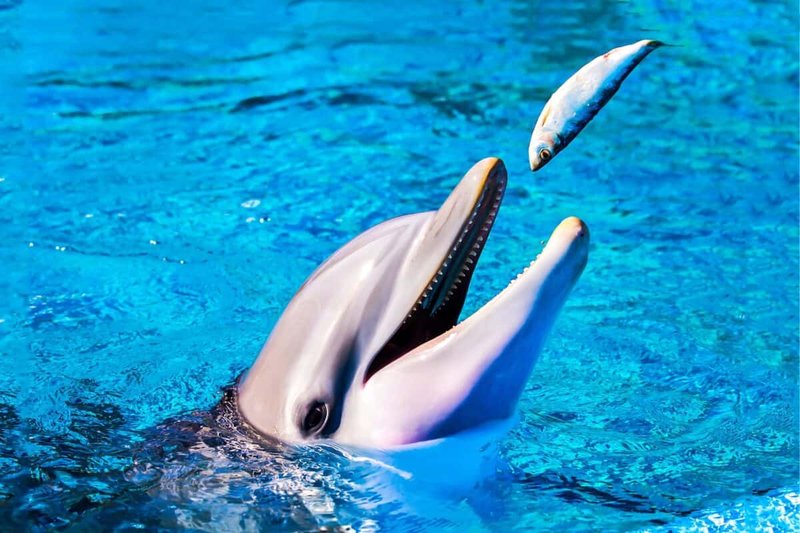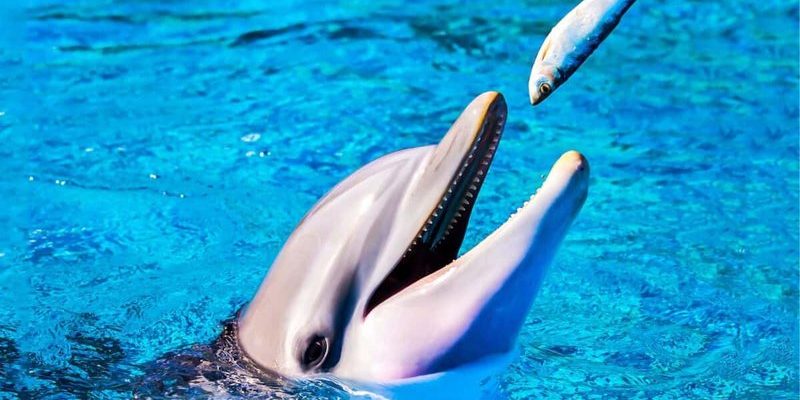
Dolphins are like the chefs of the ocean, using their skills to whip up a feast from a diverse menu. Whether you’re diving deep into ocean waters or just watching them from a boat, understanding what dolphins eat and how they hunt can offer a deeper appreciation for these creatures. Let’s explore the world of dolphin diets and feeding strategies, breaking down everything from what they eat to how they catch their meals.
The Basics of Dolphin Diets
When we talk about a dolphin’s diet, we’re generally referring to a mix of fish, squid, and even some crustaceans. Dolphins are primarily carnivorous, meaning they feast on meat rather than plants. Each species of dolphin may have its favorites, but the staples across the board include fish like herring, mackerel, and sardines.
Here’s the thing: dolphins are not picky eaters. Depending on their environment and what’s available, they can adapt their diet quite easily. This flexibility is one of the reasons why dolphins can thrive in various ocean habitats, from coastal waters to deep seas. The combination of their intelligence and adaptability makes them fascinating hunters.
How Dolphins Hunt
Dolphins often showcase extraordinary hunting techniques. They use methods like *bubble net feeding*, where they blow bubbles underwater to herd fish into a tight group. This method makes it easier for them to catch multiple fish at once. It’s a bit like using a net, but with bubbles instead!
Another common strategy is *stranding*, where dolphins chase fish onto the shore or sandbars, making it easy to catch them. They’re smart enough to work as a team when doing this, coordinating their movements to maximize their success. Imagine a well-rehearsed dance; that’s how synchronized their hunting can be.
Diving Deep: The Role of Echolocation
Dolphins employ a remarkable ability known as *echolocation* to locate prey. This is like having a built-in sonar system; they send out clicks and listen for the echoes that bounce back from objects, including fish. This ability allows them to hunt effectively, even in murky waters where visibility is low.
When hunting, dolphins can determine the size, shape, and distance of their prey. This skill not only helps them find food but also keeps them safe from predators. The next time you see a dolphin jumping out of the water, think about how sophisticated their senses are, helping them navigate and feast in their ocean home.
Feeding Habits Across Species
Dolphins aren’t a one-size-fits-all kind of animal. With over 40 species of dolphins, their diets can vary quite a bit. For example, the *bottlenose dolphin* primarily eats fish and squid, while *orca* (killer whales) are known to hunt seals and even other whales.
Depending on where they live, their feeding habits evolve. Coastal dolphins may feast more on fish close to the shore, while deep-sea dolphins might dive deeper for squid. Understanding these differences helps us appreciate the diversity of dolphin diets and the ecosystems they inhabit.
The Impact of Diet on Dolphin Health
Just like humans, a dolphin’s diet directly affects its health. Dolphins require a balanced diet, rich in nutrients to keep their energy up and their bodies functioning well. When they don’t get enough food or the right kind of food, it can lead to health issues. For example, a lack of fish can lead to malnutrition, making them more vulnerable to diseases.
In the wild, dolphins maintain their health by selecting a diverse range of prey based on availability. However, those in captivity often face different challenges, as their diets need to be carefully monitored and curated to mimic a natural diet as closely as possible. It’s essential to provide a mix of fish and other marine life, much like they would find in the wild.
Human Impact on Dolphin Diets
Unfortunately, human activity has a significant impact on dolphin diets. Overfishing, pollution, and habitat destruction can drastically reduce the availability of prey. When fish populations dwindle, dolphins find it harder to find enough food, which can threaten their survival.
Moreover, pollution can introduce harmful substances into the water, affecting the fish dolphins eat. This not only affects the fish’s health but can also have serious consequences for the dolphins themselves. It’s a complex web—what happens in the ocean affects every creature, including dolphins.
Protecting Dolphin Diets and Habitats
To ensure dolphins continue to thrive, it’s crucial that we take steps to protect their habitats and food sources. Being mindful of fishing practices, promoting sustainable seafood, and supporting marine conservation efforts can all make a difference.
Simple actions, like making informed choices about the seafood we consume, can have a ripple effect on dolphin populations. Supporting organizations that work to protect marine life and advocating for cleaner oceans can help create a healthier environment for dolphins to live and feed in.
In conclusion, understanding the diet and feeding habits of dolphins offers us not only a peek into their fascinating lives but also a reminder of the interconnectedness of all life in the ocean. By appreciating and protecting these magnificent creatures, we can help ensure they remain a vital part of our planet’s marine ecosystem for generations to come.

